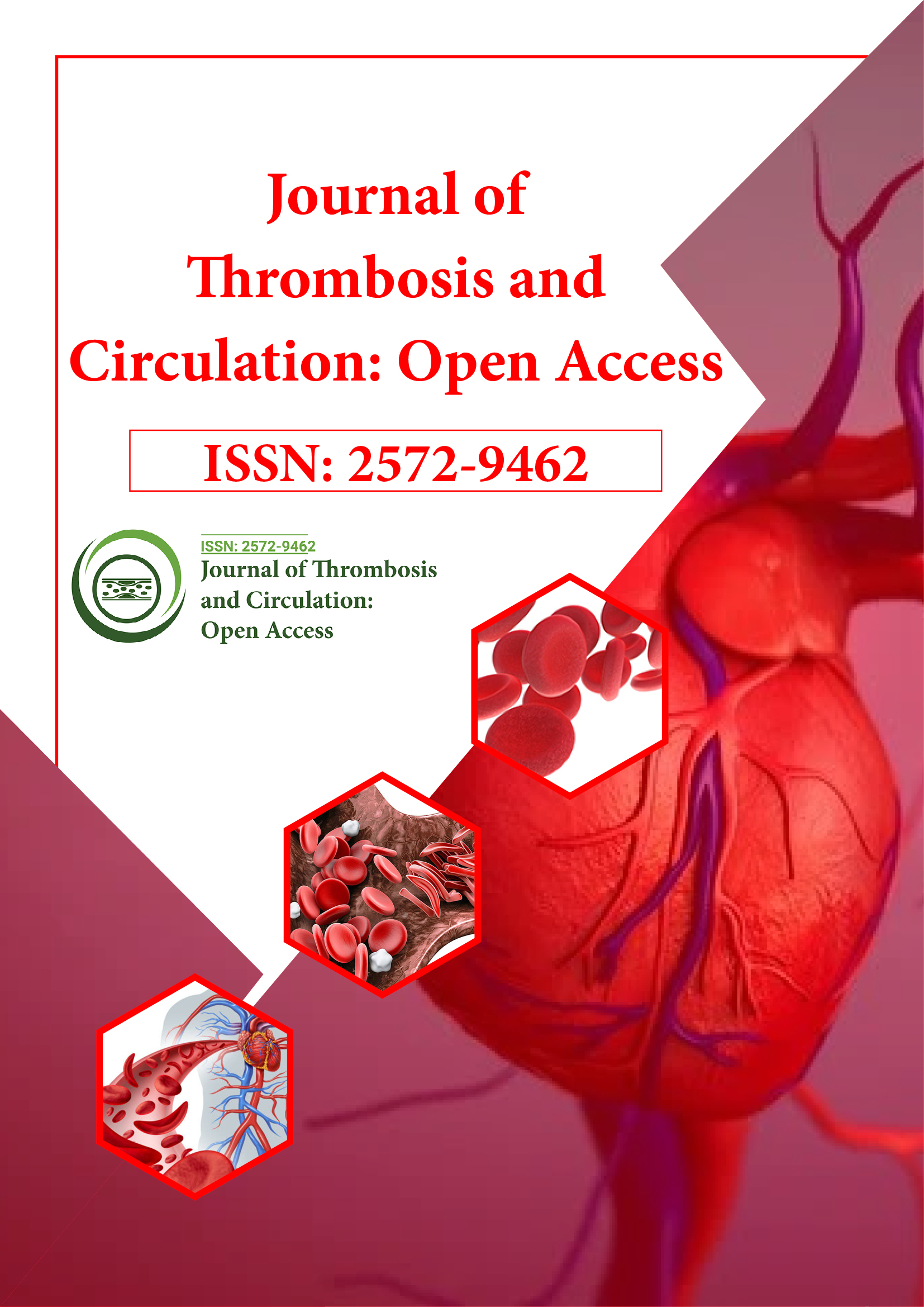Indexed In
- RefSeek
- Hamdard University
- EBSCO A-Z
- Publons
- Google Scholar
Useful Links
Share This Page
Journal Flyer

Open Access Journals
- Agri and Aquaculture
- Biochemistry
- Bioinformatics & Systems Biology
- Business & Management
- Chemistry
- Clinical Sciences
- Engineering
- Food & Nutrition
- General Science
- Genetics & Molecular Biology
- Immunology & Microbiology
- Medical Sciences
- Neuroscience & Psychology
- Nursing & Health Care
- Pharmaceutical Sciences
Commentary - (2022) Volume 8, Issue 2
Increased Complexity of Platelet Aggregation
Dongmi Shin*Received: 18-Feb-2022, Manuscript No. JTCOA-22-16340; Editor assigned: 21-Feb-2022, Pre QC No. JTCOA-22-16340(PQ); Reviewed: 07-Mar-2022, QC No. JTCOA-22-16340; Revised: 14-Mar-2022, Manuscript No. JTCOA-22-16340(R); Published: 21-Mar-2022, DOI: 10.35248/2572-9462, 22.8.185
Description
Platelet aggregation and clot formation are important steps in the atherogenesis process. First, platelets are activated by binding to collagen at the site of vessel wall injury to form thromboxane A2 and releasing adenosine diphosphate, which activates other platelets flowing near the injury. Thrombin, formed from the coagulation cascade, is the most potent activator of platelets, interacting with its receptors on the platelet membrane and activating by inducing signal transduction via phosphoinosotide and other pathways. When activated, platelets change shape and aggregate in the presence of fibrinogen to form thrombus platelet plugs. In addition, more stable thrombi are formed by the fibrin network that binds to platelet aggregates. Endothelial cells of the vessel wall synthesize thromboxane A2 (platelet aggregation activator/inducer) and prostacyclin PGI2 (platelet aggregation inhibitor) from arachidonic acid via the cyclooxygenase pathway.
Aggregation measurements have revolutionized the study of platelet function and have provided basic insights into the molecular mechanisms underlying platelet-to-platelet adhesion interactions. Identification and characterization of all major physiological agonists, antagonists, surface receptors and intracellular signaling pathways in platelets includes platelet aggregation studies and in many situations, individuals suffering from aggregation defects. There is a good correlation with bleeding disorders. Similarly, antiplatelet agents that increase the risk of bleeding in vivo can be detected using standard aggregation assays, further enhancing the clinical usefulness of the assays. Therefore, for many years, agglomerators have provided accurate indicators of the basic processes that regulate agglomeration. However, as recognized in the early 1970s, this experimental system does not take into account the significant effects of blood flow. This is an important variable that increases the complexity of the aggregation process.
When blood vessels are damaged, platelets are exposed to adherent proteins and soluble agonists on the walls of the blood vessels, triggering platelet activation and forming hemostatic thrombi. Pathological activation of platelets can induce obstructive thrombosis and cause ischemic events such as myocardial infarction and stroke, which are the leading causes of death worldwide. Platelet activation requires intracellular signaling initiated by the platelet receptors of adhesive proteins and soluble agonists. Many platelet activation signaling pathways have been established over the years, but recent significant advances have revealed much more complex and sophisticated signaling and amplification networks. The discovery of new receptor signaling pathways and regulatory networks has challenged some of the long-standing concepts of platelet signaling. This review outlines new developments and concepts in platelet activation signaling.
Platelets are non-nuclear cells that circulate in the blood about 7-9 days after they are produced in the bone marrow. They are very important elements of the hemostatic system that prevents blood loss when the vessel wall is destroyed. Upon contact with the damaged blood vessel wall, platelets are activated and attach to the blood vessels to form aggregates at the damaged site, preventing blood leakage. Both bleeding and thrombosis can result from platelet dysfunction. Therefore, assessment of platelet function is very important for diagnosis and treatment.
Platelet adhesion, activation and aggregation are important events in hemostasis and thrombosis. Platelet adhesion molecule, αIIbβ3 integrin and glycoprotein (GP) IbIXV are essential for these processes. Other adhesion molecules such as selectin, GPVI and cadherin are also involved. The important role of adhesion molecules in normal hemostasis is well demonstrated in hemorrhagic disorders such as Grantsmann’s thrombosis asthenia (β3 integrin deficiency) and Bernard-Soulier syndrome (GPIbIXV complex deficiency). However, in pathological conditions, excessive platelet function can cause thrombotic disorders such as myocardial infarction and ischemic stroke, resulting in far more deaths each year than cancer or respiratory illness. Therefore, platelet aggregation inhibitors are essential in the treatment of thrombosis.
Citation: Shin D (2022) Increased Complexity of Platelet Aggregation. J Thrombo Cir. 8:185.
Copyright: © 2022 Shin D. This is an open-access article distributed under the terms of the Creative Commons Attribution License, which permits unrestricted use, distribution, and reproduction in any medium, provided the original author and source are credited.
